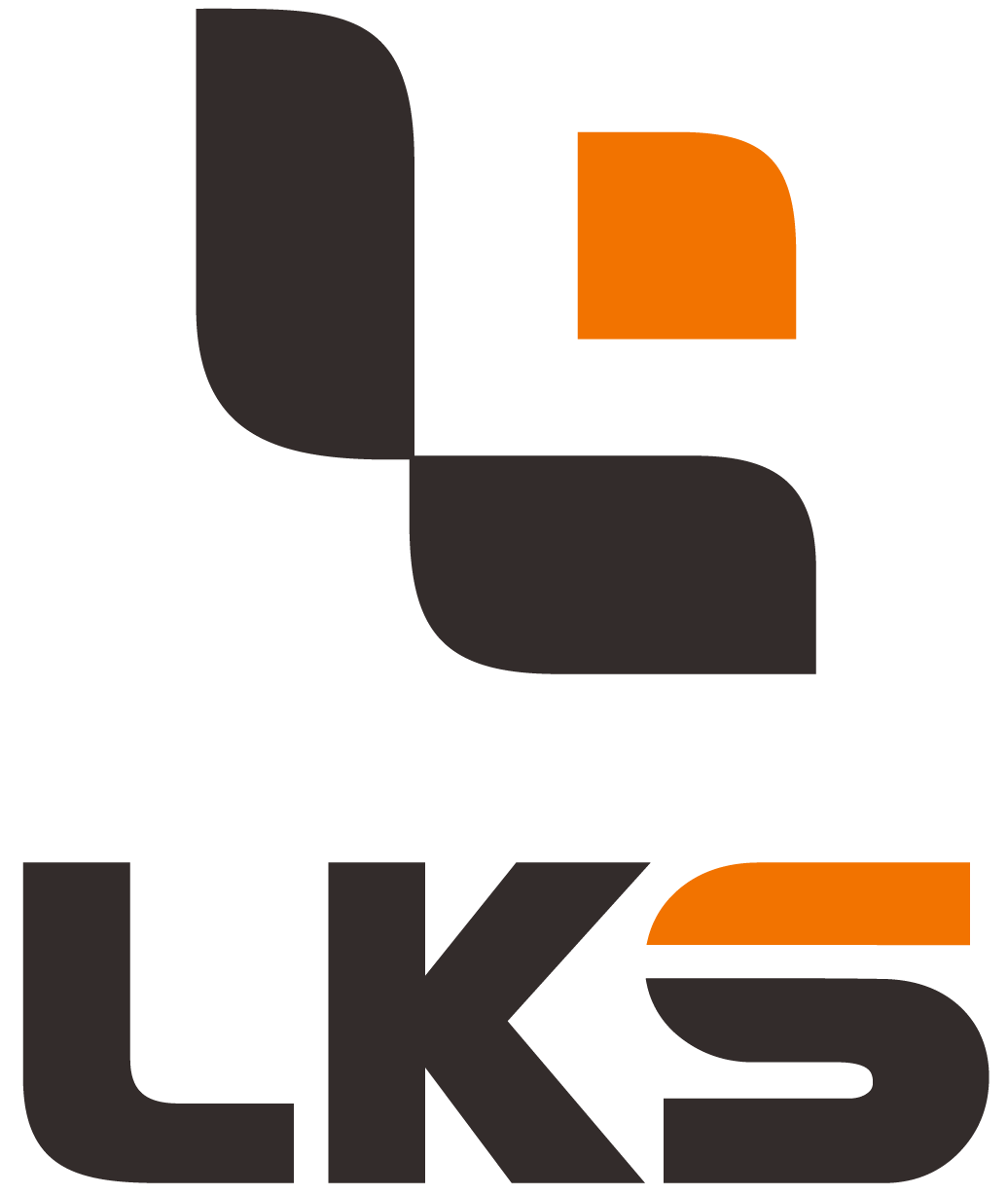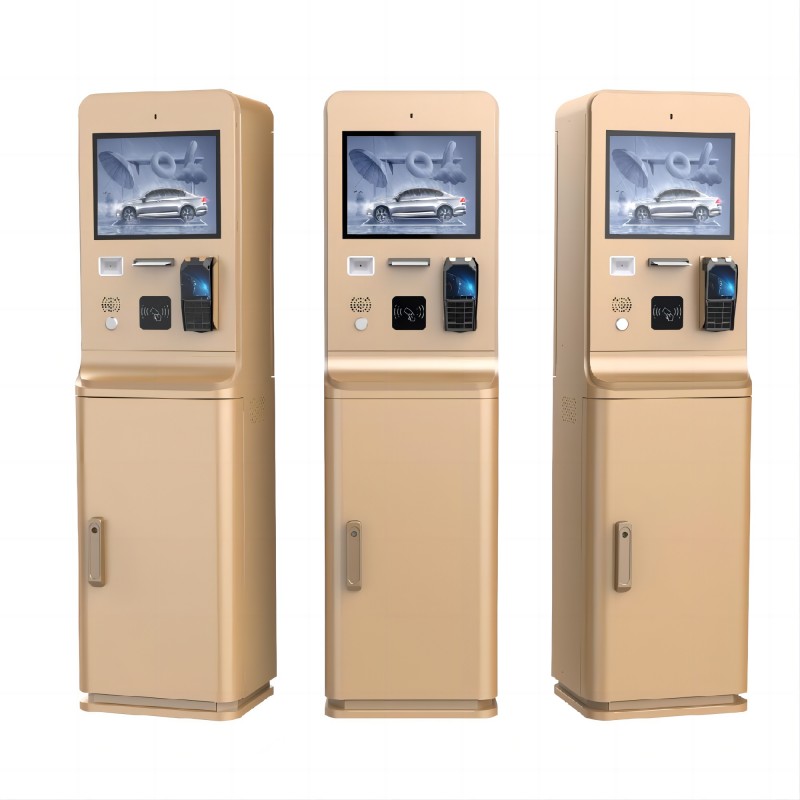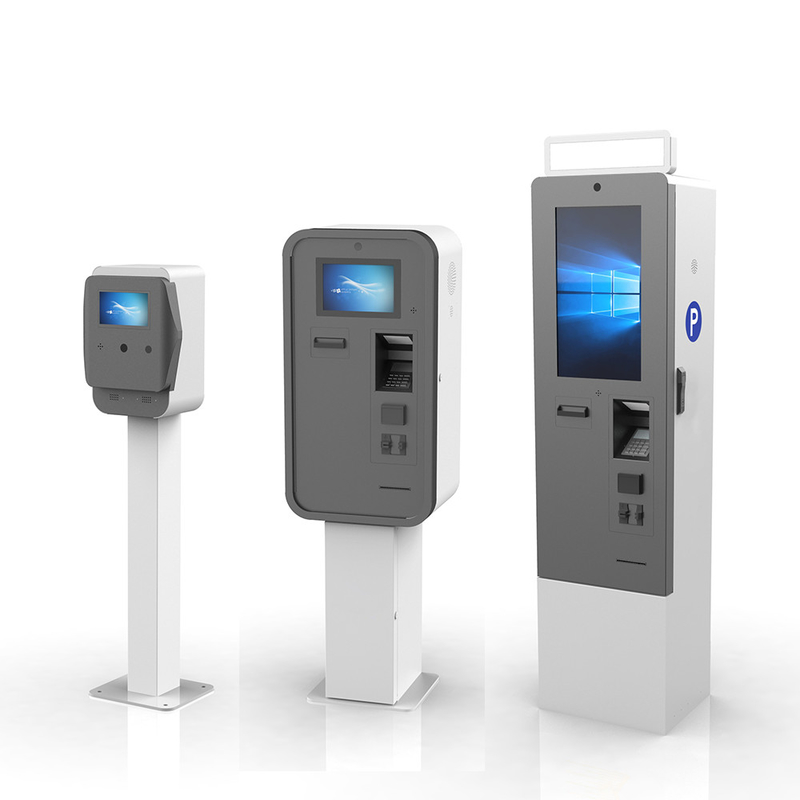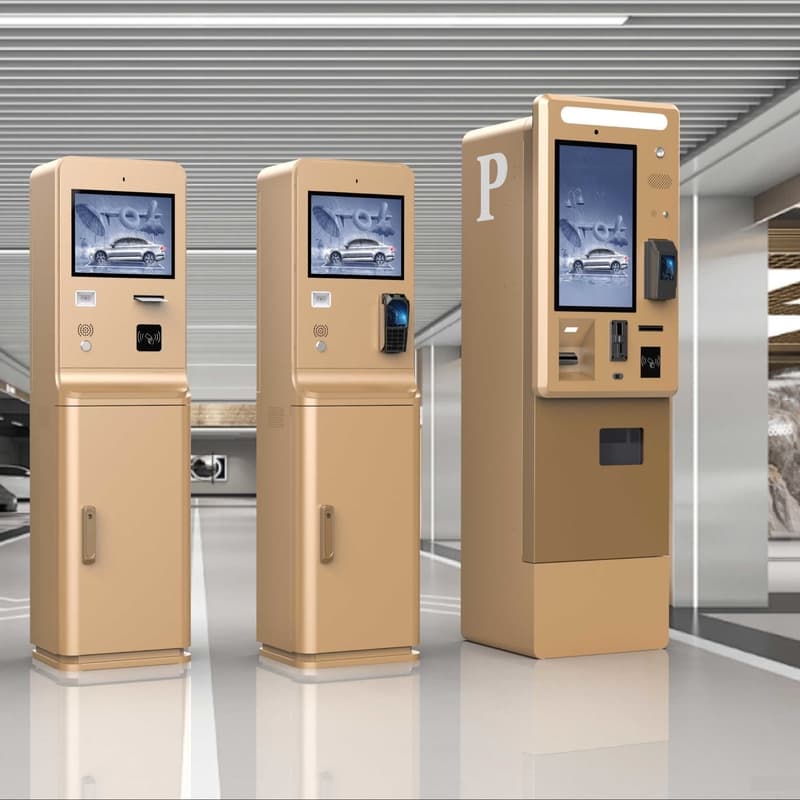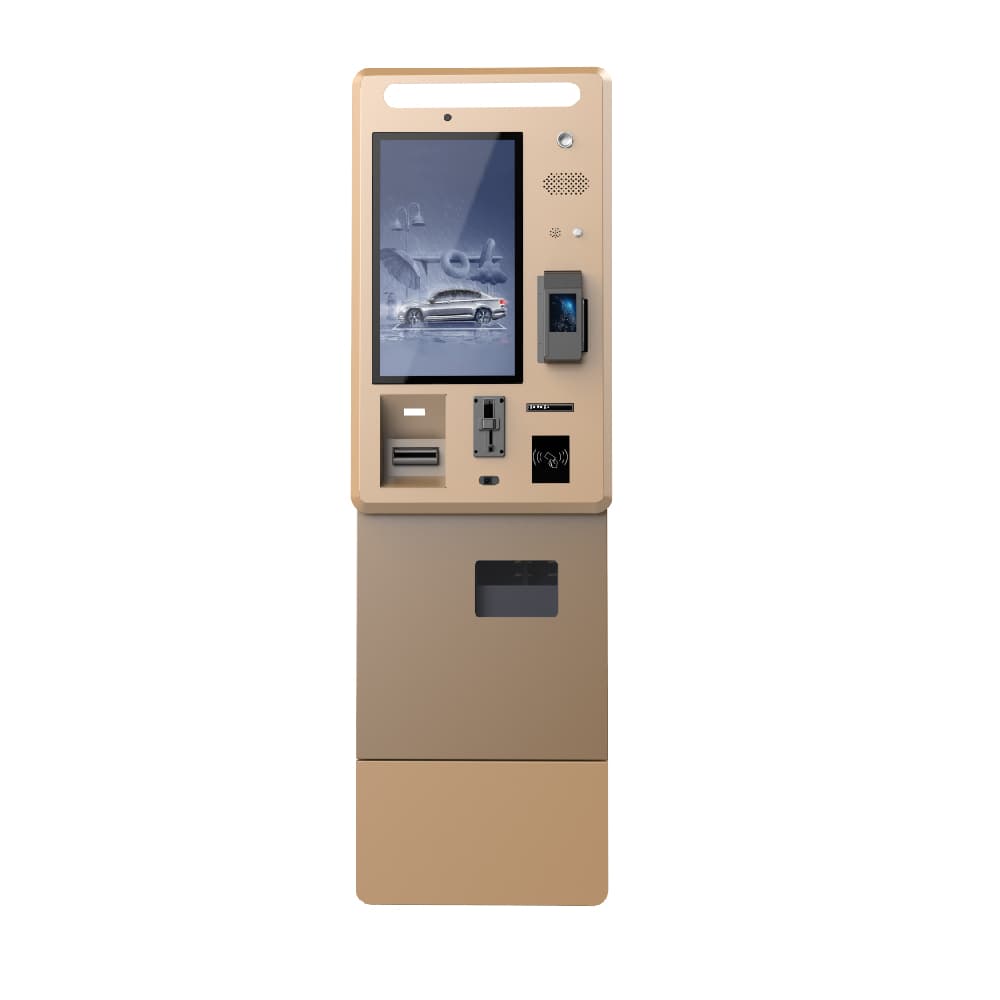
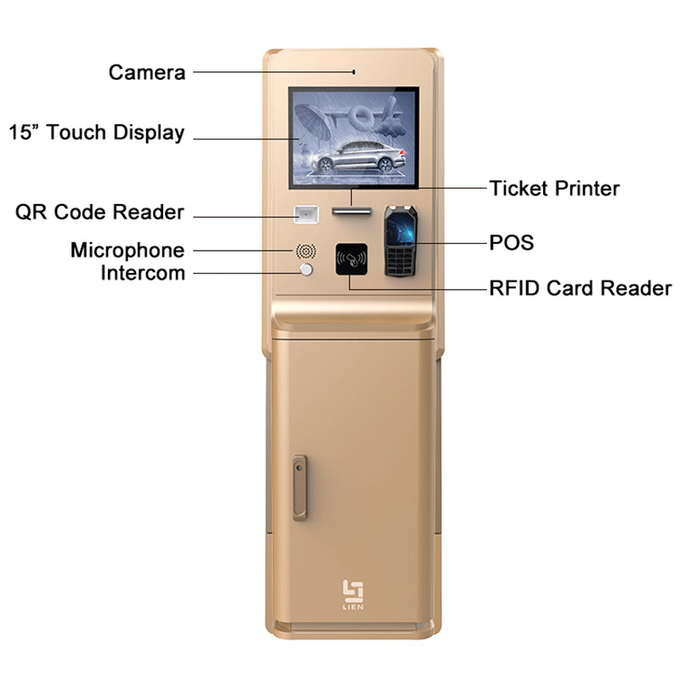

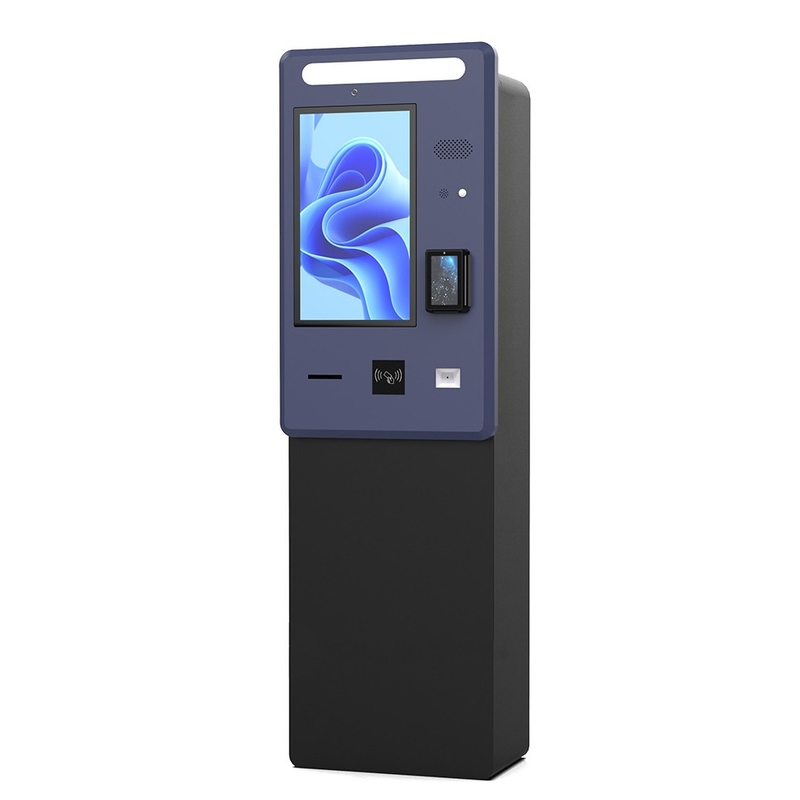
- Request A Quote
Parking Kiosk Types A Complete Guide to Classification Features and Uses
When navigating the world of modern parking lot solutions, you'll most often encounter two key terms: parking kiosk and parking machine. While often used interchangeably, both refer to the automated devices that serve as the heart of a parking system, handling everything from payment to access control. This guide is designed to help you understand the most common classifications of these parking machines, along with their functions and typical applications, so you can make the best choice for your needs.
Lean Kiosk As a leading expert in parking solutions, I can provide a detailed breakdown of the common terminology. The term parking kiosk is a broad category that often includes more specific devices like the parking lot kiosk, parking payment kiosk, and parking ticket kiosk.
This guide will clarify the definitions, core functions, and applications of each of these specialized kiosks to help you choose the right solution for your needs.
1. General and Functional Terms for Parking Lot Kiosk
Parking lot kiosks are often referred to by different names and terms depending on the context. Below are some common names for parking lot kiosks, summarized by Lean Kiosk from different perspectives. These terms are widely used and often refer to a centralized, self-service device in a parking environment.
Parking Lot Kiosk / Park Kiosk
These are general, interchangeable terms for a self-service machine found in a parking lot or garage.
Definition: A central terminal that manages parking services, often handling multiple functions beyond simple payment.
Core Features: A user-friendly interface for managing parking sessions, and it may include features like permit validation or information display.
Application: Surface parking lots, public parks, and corporate campuses.
Parking Meter Kiosk
This term refers to a modern, multi-space version of a traditional single-space parking meter.
Definition: A kiosk that manages payments for several parking spaces within a designated zone.
Core Features: Users input their license plate or parking space number, pay for a session, and receive an electronic receipt.
Application: On-street parking and downtown urban areas.
Self Parking Kiosk
This term emphasizes the self-service nature of the machine, allowing a driver to handle all parking tasks independently.
Definition: A kiosk that enables drivers to manage and pay for their parking session without any human assistance.
Core Features: Intuitive menus for selecting parking duration, paying, and validating their session.
Application: Any automated or unattended parking facility.
Parking Kiosk Machine
This is a descriptive term that combines the words "kiosk" and "machine" to describe a parking-related, self-service terminal.
Definition: A general term for a kiosk that handles transactions and services for parking.
Core Features: Versatile functionality, often supporting multiple payment methods and ticket management.
Application: Used interchangeably across a wide range of parking solutions.
Location-Specific and Regional Terms for Parking Lot Kiosk, these terms specify the type of environment or location where the kiosk is found.
Parking Garage Kiosk
This term refers to a kiosk located within a multi-level parking garage.
Definition: A kiosk that manages parking sessions, often processing payments for a vehicle that has entered the garage with a ticket.
Core Features: Integration with garage access systems and "pay-on-foot" functionality.
Application: Multi-story garages and underground parking structures.
Car Park Kiosk
This is a common term used in the United Kingdom and Australia for a kiosk located in a car park.
Definition: A centralized machine that handles payments and other services for a parking facility.
Core Features: The same functionality as a Parking Lot Kiosk.
Application: Parking facilities in the UK, Australia, and other Commonwealth countries.
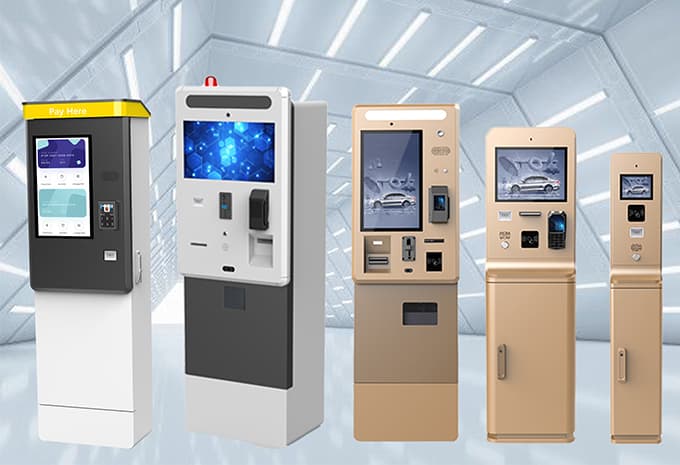
When navigating modern parking systems, you'll encounter a variety of terms for self-service payment machines. The most common is a parking payment kiosk, which can be broken down into more specific categories based on its function and location.
Here's a breakdown of the common types of parking payment kiosks and where you'll find them.
2. General and Functional Terms for Parking Payment Kiosk
Parking payment kiosk
This kiosk is the most widely used and general term for a machine that accepts payment for parking. It's the central point for transactions, allowing drivers to pay for their session.
Core Features: It accepts a variety of payment methods, including credit cards, mobile payments like Apple Pay and Google Pay, and often cash. It has a user-friendly touchscreen to guide the transaction and a system to track payments.
Application: You'll see these in almost any modern paid parking environment, from city streets to private lots and airport garages.
Pay At Kiosk Parking
This term describes the act of paying for parking at a kiosk, specifically after you've parked your vehicle. It emphasizes the "pay-on-foot" model commonly found in gated lots or garages.
Core Features: The kiosk validates a ticket or uses license plate recognition (LPR) to determine the parking duration and fee. The driver then pays the amount owed before returning to their car to exit.
Application: Large-scale parking garages, airports, and secured lots where drivers need to pay before exiting.
Parking Lot Payment Kiosk
This is a parking payment kiosk specifically designed for a surface parking lot. It's often part of a simpler, less complex system than a garage.
Core Features: It typically serves a zone or an entire lot, requiring the driver to enter their license plate or space number. It's often a "pay-and-display" or "pay-by-plate" system.
Application: Shopping centers, university campuses, and public surface lots.
Parking Garage Payment Kiosk
This type of parking kiosk is built for the specific needs of a multi-level parking garage. It's integrated with the garage's entry and exit systems.
Core Features: The kiosk works with the garage's access control, processing payments for vehicles that have entered with a ticket. It is usually placed near elevators or exits to allow for convenient payment on the way out.
Application: Multi-story parking garages, underground parking facilities, and covered lots.
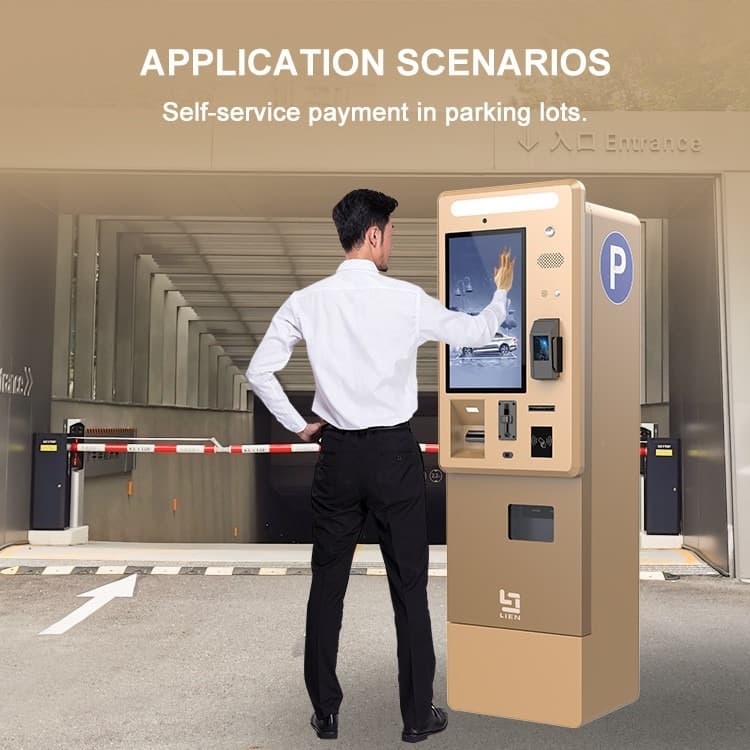
3. General and Functional Terms for Parking Ticket Kiosk
Parking Ticket Kiosk
A parking ticket kiosk is a core component of modern parking management systems. It's a self-service machine designed to issue a physical or digital ticket that serves as proof of a paid parking session. This automated process streamlines traffic flow and reduces the need for human attendants.
Core Features:
Ticket Dispensing: Prints a ticket with a barcode, QR code, or timestamp for easy validation.
Integrated Payment: Accepts a variety of payment methods, including cash, credit cards, and contactless options like Apple Pay and Google Pay.
User Interface: Features a clear, intuitive touchscreen display that guides the user through the process.
Data Reporting: Automatically sends real-time transaction data to a central management system for monitoring and revenue tracking.
Application:
On-Street Parking: Users pay for a ticket to place on their dashboard.
Airport Garages: Drivers take a ticket upon entry and pay for it at a parking ticket kiosk before exiting.
Pay-and-Display Lots: Drivers purchase and display a ticket for a specific duration.
Customizable Parking Ticket Kiosk
A customizable parking ticket kiosk is a tailored solution built to meet a client's specific operational, aesthetic, and functional needs. Unlike a standard off-the-shelf model, a customizable kiosk offers a high degree of flexibility.
Core Features:
Custom Enclosure: The physical design, including the shape, color, branding, and mounting options, can be fully customized.
Modular Hardware: Allows for the integration of specific components, such as a custom receipt printer, a unique bill validator, or a specialized scanner.
Custom Software: The user interface can be designed to match a company's branding and to support unique operational requirements, such as tiered pricing or loyalty programs.
Specific Integration: Can be configured to work with a client's existing software, access control, or other hardware.
Application:
Corporate Campuses: Tailored to meet specific employee parking policies and branding.
Private Facilities: Ideal for apartment complexes, hospitals, or hotels with unique visitor access and payment rules.
High-End Venues: For venues that require a sleek, modern, and branded solution.
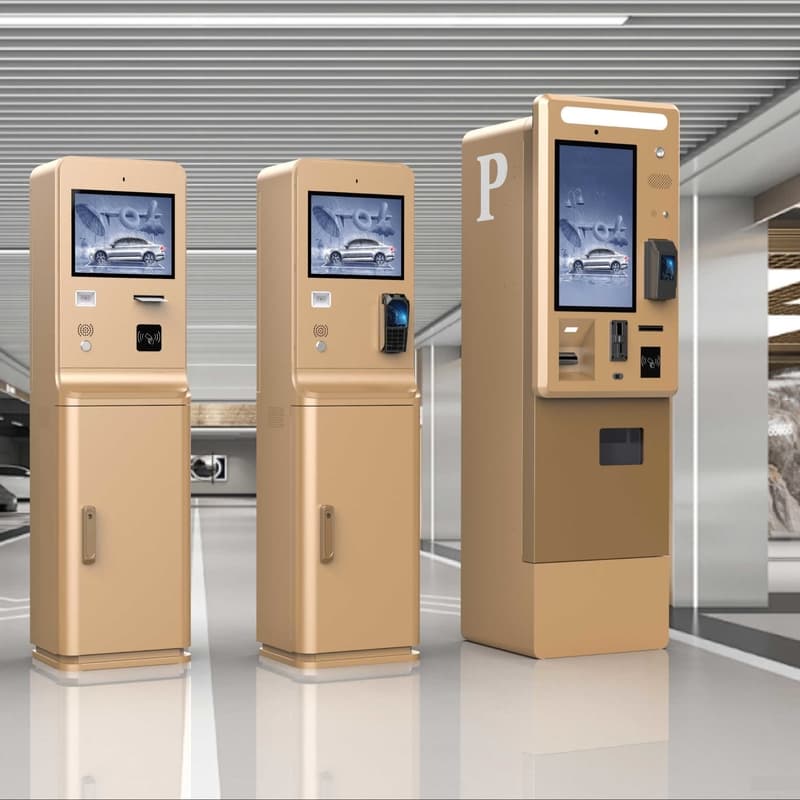
Lean Kiosk As a leading expert in the parking machine industry, I can provide a clear and professional breakdown of the terminology. The term parking machine is a general category that includes a variety of specialized devices. A parking payment machine, for instance, is a specific type of parking machine designed to process transactions, while a parking ticket machine focuses on issuing tickets.
To help you navigate these terms, here is a comprehensive list defining the most common names for these devices, along with their functions and applications.
4. General Terms for Parking Payment Machine
Parking Payment Machine is the most common name for parking machines. Below are all the related names sorted by Lean kiosK. These terms are widely used and often refer to a broad category of payment-processing devices in a parking environment.
Parking Payment Machine
A comprehensive term for any machine that facilitates payment for parking.
Function: Accepts payment via cash, card, or mobile phone. It is the central point for all transactions.
Application: Found in a variety of settings, including lots, garages, and on-street.
Parking Pay Machine
A common, straightforward term for a device that accepts payment.
Function: Handles simple parking transactions.
Application: Used interchangeably with "Parking Payment Machine" in many contexts.
Parking Pay Station Machines
Typically refers to a centralized kiosk that serves multiple parking spaces in a lot or a specific zone on a street.
Function: Enables a single machine to manage payments for a large number of vehicles, often using license plate or space number input.
Application: Large surface lots, university campuses, and public streets.
Pay Machine Parking
A general phrase describing the act of paying for parking at an automated machine.
Car Parking Payment Machines
A common term used in the United Kingdom and Australia, serving the same function as a "Parking Payment Machine" in North America.
Parking Fee Machine
A direct, functional term for a machine that collects a fee for parking services.
Location & Function-Specific Terms for Parking Payment Kiosk, These names are more specific and often hint at the machine's location or a particular payment process.
Parking Lot Payment Machines
Specifically refers to payment machines located in an off-street parking lot.
Function: Handles transactions for vehicles parked in a designated lot.
Application: Commercial parking lots, shopping center lots.
Parking Garage Payment Machine
Refers to a machine located inside a parking structure or garage.
Function: Processes payments for vehicles exiting a multi-level garage.
Application: Multi-story parking garages, underground parking.
Pay On Foot Machine / Pay On Foot Parking Machine
These terms refer to a kiosk where a driver pays for their parking session by foot before returning to their vehicle to exit.
Function: A driver validates a ticket or license plate number, pays the fee, and receives a receipt for exiting the lot.
Application: Gated parking garages and secure lots.
Pay At Machine Parking
A descriptive term for the process of paying for a parking session at a machine, typically before a driver exits the parking area.
Pay And Display Parking Machine
A specific type of parking machine where a driver pays for a ticket and then places it on their car's dashboard as proof of payment.
Function: Issues a physical ticket displaying the expiration time, which is then visibly displayed in the car.
Application: On-street parking and surface lots where enforcement officers patrol on foot.
Parking Toll Machine
A term sometimes used for a machine at a lot's entrance or exit that collects a flat fee or toll, especially at private or specialized lots.
Parking Toll Machine
A term sometimes used for a machine at a lot's entrance or exit that collects a flat fee or toll, especially at private or specialized lots.
Parking Fee Machine
A straightforward term for any machine that collects a fee for parking.
Parking Toll Machine
A term sometimes used for a machine at a lot's entrance or exit that collects a flat fee or toll, especially at private or specialized lots.
Pay to Park Machines
A general term describing machines that are used to pay for a parking session
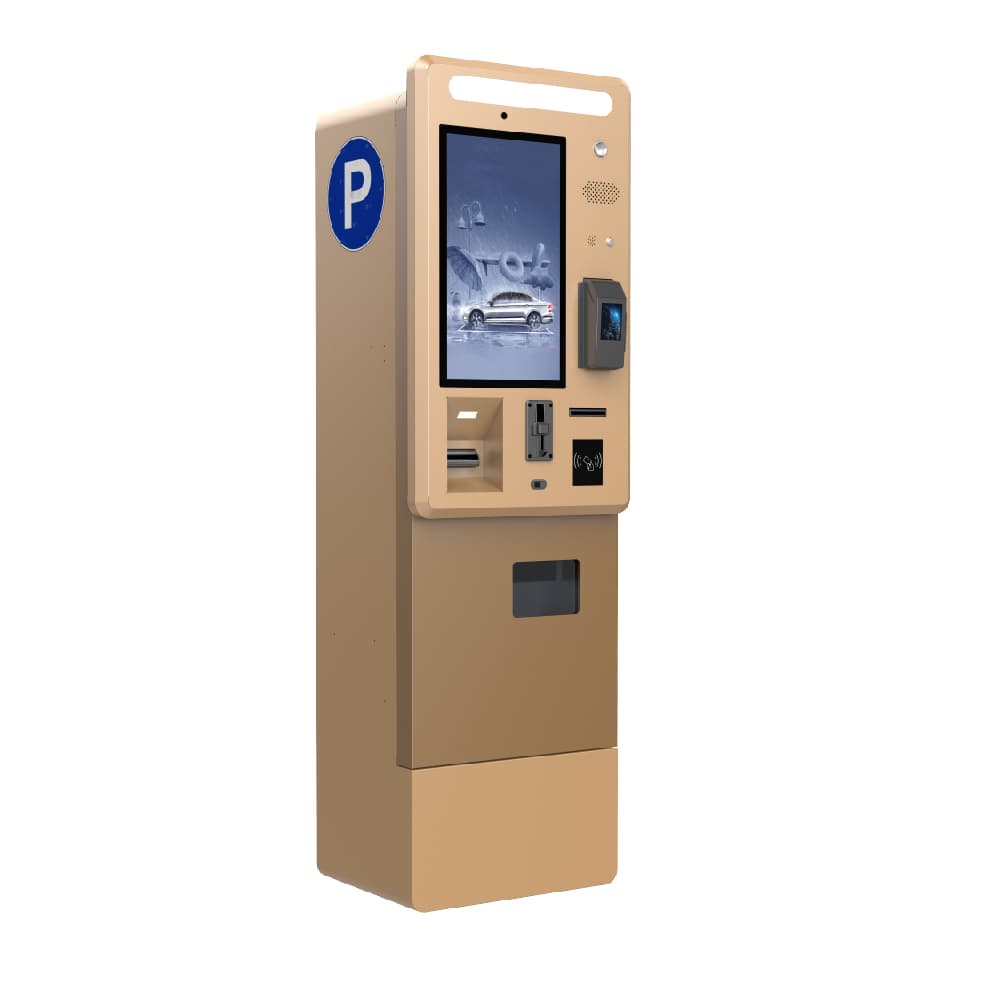
As a leading expert in the parking ticket machine industry, I can provide a clear and professional breakdown of the terminology. The terms you've listed are often used interchangeably, but each one has a specific context and purpose.
The parking ticket machine serves as a central point for managing parking sessions, whether it's by issuing a ticket upon entry or allowing a driver to pay for a ticket before displaying it on their dashboard.
Here is a comprehensive guide defining each term, along with its key features and applications.
5. General & Functional Terms for Parking Ticket Machine
Parking Ticket Machine is also called in the field of parking solutions. There are many. In order to give you a more comprehensive understanding, we at Lean Kiosk have sorted it out in detail. These terms are commonly used to describe the machine's primary function of issuing tickets.
Parking Ticket Machine / Ticket Parking Machine / Machine Parking Ticket
These are the most common and comprehensive terms for a device that issues a physical ticket for parking.
Definition: An automated terminal that prints a tangible ticket serving as proof of a paid parking session.
Core Features: Dispenses tickets, records transaction data, and includes a timestamp and expiration time. It often includes a payment module for processing fees.
Application: Found in a wide variety of locations, including both on-street and off-street parking.
Parking Ticket Vending Machine
This term emphasizes the act of "vending" or selling a ticket to the customer.
Definition: A self-service machine that sells a parking ticket for a specific duration.
Core Features: Accepts payment and dispenses a ticket. It is a more descriptive synonym for a parking ticket machine.
Application: Pay-and-display lots and on-street parking areas.
Parking Ticket Dispenser Machine
This term highlights the machine's function of dispensing a ticket, often at the entry point of a gated lot.
Definition: A machine specifically designed to issue a ticket upon a vehicle's entry.
Core Features: A pressure sensor or button activates the ticket dispenser, which prints a timestamp and a unique barcode or QR code.
Application: Entry lanes of parking garages, airports, and secured lots.
Automatic Parking Ticket Machine
This term clarifies that the machine is an automated, self-service device, operating without human intervention.
Definition: A fully automated machine that handles all aspects of ticket issuance and payment.
Core Features: Automated processes for ticket dispensing, payment, and data transmission.
Application: Unattended parking lots and modern smart parking systems.
Parking Ticket Machine System
This phrase refers to the entire network of devices and software that work together.
Definition: A comprehensive system that includes the parking ticket machine as a component, along with a central server, barrier gates, and management software.
Core Features: Centralized data collection, remote monitoring, and automated access control.
Application: Large-scale parking operations, university campuses, and corporate parks.
Location-Specific Terms for Parking Ticket Machine, These names are more specific to where the machine is located.
Parking Lot Ticket Machine
Refers to a parking ticket machine found in an off-street surface lot.
Definition: A machine that issues tickets for parking in an open-air, private parking lot.
Core Features: Often a "pay-and-display" model.
Application: Shopping center lots, private commercial lots.
Parking Garage Ticket Machine / Parking Garage Ticket Dispenser
These terms specify a machine's location within a parking structure.
Definition: A machine that either dispenses a ticket at the garage entrance or issues a ticket after a "pay-on-foot" transaction.
Core Features: Integrates with the garage's access control system.
Application: Multi-story parking garages and underground parking.
Specialized & Regional Terms for Parking Ticket Machine, these terms describe a specific function or are used in different regions.
Parking Ticket Validation Machine
This machine's sole purpose is to validate an existing ticket, not to issue a new one.
Definition: A device used to apply a discount, timestamp, or stamp to a parking ticket, typically after a purchase has been made at a store or business.
Core Features: Scans a ticket's barcode or QR code and applies a discount or validation code.
Application: Shopping malls, medical facilities, and hotels.
Car Park Ticket Machine / Car Parking Ticket Machine
These are common terms used in the United Kingdom, Australia, and other regions, referring to any machine that issues a ticket for a vehicle in a parking lot.
For a detailed introduction to parking ticket machine types, you can click our Parking Ticket Machine Types A Complete Guide.
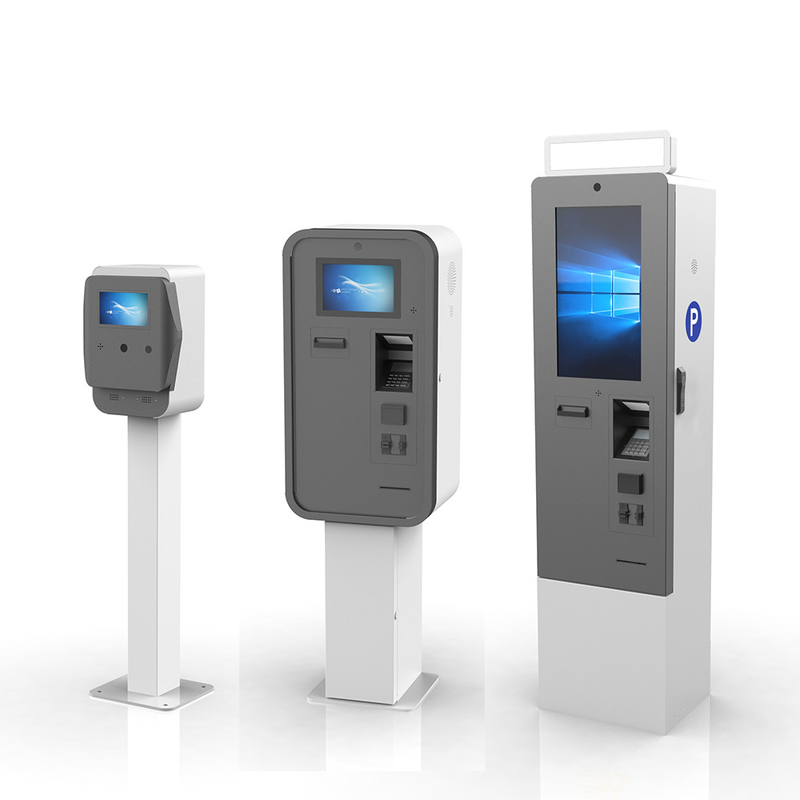
As a leading expert in the parking lot machine industry, I can help you navigate the wide variety of names for these devices. The terms you've provided often describe a specific function, location, or technological feature of a parking lot machine.
This guide provides a clear definition and purpose for each term, helping you understand the nuances in the industry.
6. General & Common Terms for Parking Lot Machine
Parking Lot Machine has many similar names and names. Below are the common names compiled by Lean Kiosk for you. We hope to help you make a more reasonable choice. These terms are frequently used as broad names for any device that manages paid parking.
Parking Lot Machine / Car Park Machines
These are general, interchangeable terms for machines found in a parking lot.
Core Function: They process payments and manage parking sessions for vehicles parked in an off-street lot.
Application: Shopping centers, office parks, and private lots.
Paid Parking Machine
This is a direct, descriptive term for any device that collects money for parking.
Core Function: Serves the sole purpose of accepting payment for a parking session.
Application: Any facility that charges a fee for parking.
Machine Parking
This is a general phrase describing the act of using a machine to pay for parking.
Location-Based & Specific Function Terms for Parking Lot Machine, These names are more precise and refer to a specific type or location.
Parking Garage Machine
Parking Garage Machine Refers to a machine located within a parking garage, typically for processing payment before a driver returns to their vehicle.
Core Function: Processes payment for a session, often after the driver has obtained a ticket upon entry.
Application: Multi-story garages and underground parking structures.
Street Parking Machine
A machine specifically designed for on-street parking.
Core Function: Collects payment for parking along a public street, often managing a single space or a small zone.
Application: Urban and suburban streets.
Parking Validation Machine
A machine whose primary purpose is to validate an existing parking ticket, often to apply a discount.
Core Function: Scans a ticket and marks it as validated, typically after a customer has made a purchase from a business.
Application: Retail stores, restaurants, hospitals, and hotels.
Payment & Vending Terms for Parking Lot Machine, these names highlight the specific type of currency or item the machine handles.
Parking Change Machine
A machine designed to provide change for bills, typically to be used for a separate, coin-only parking meter.
Core Function: Breaks down large bills into coins.
Application: Older parking lots with coin-operated meters.
Parking Coin Machine
A machine that only accepts coins for payment.
Core Function: Accepts coins to initiate or extend a parking session.
Application: Older parking meters and some legacy systems.
Parking Meter Machine
The classic term for a machine that measures and collects payment for a single parking space. Modern versions have evolved into multi-space pay stations.
Core Function: Times a parking session after payment has been made, often displaying the remaining time on a screen.
Application: On-street parking.
Parking Slip Machine
A machine that dispenses a paper receipt or slip after a payment has been made, which must be placed on the dashboard.
Core Function: Prints a simple ticket or slip as proof of payment.
Application: Pay-and-display lots.
Parking Token Machine
A machine that accepts a special token or coin as payment.
Core Function: Validates or accepts a token for a parking session, typically used in private or specialized lots.
Application: Private employee lots, apartment complexes, and a few specific commercial properties.
Technology-Based Terms for Parking Lot Machine, these names describe the machine based on its technological features.
Automatic Parking Machine
A term that emphasizes the machine's ability to operate without human intervention.
Core Function: All processes, from payment to ticket dispensing, are automated.
Application: Unattended lots and garages.
Contactless Parking Machines
A machine that is equipped with NFC (near-field communication) technology.
Core Function: Allows users to pay by simply tapping their contactless credit card, smartphone, or smartwatch.
Application: Modern parking systems seeking to provide a fast, secure payment option.
Smart Parking Machine
A machine that is connected to a network and provides real-time data, remote management, and advanced features.
Core Function: Collects data on usage and revenue, can be managed remotely, and often integrates with other systems.
Application: Modern, data-driven parking operations and smart city initiatives.
Summary: Your Comprehensive Guide to Parking Kiosks
This guide serves as a definitive resource for understanding the vast world of parking kiosks and parking machines. Whether you're looking for a specific parking payment kiosk, a robust parking ticket kiosk, or a highly-integrated parking lot kiosk, this page offers a complete breakdown of every common classification.
From functionality and technology to durability and installation, we've organized the essential information to help you identify the perfect solution for your needs.
Don't let the variety of terms confuse you. This is the ultimate knowledge base for all things parking kiosk.
For more detailed information or to discuss a custom solution, please don't hesitate to contact our Lean Kiosk team directly.
Address: No. 99-15, Dayang Road, Rentian Community, Fuhai Street, Shenzhen, Guangdong, China
- Tel:+8618664576557
- Email: frank@lien.cn
- Worktime:8:00-02:00
- Contact Person:Frank
- Mobile Site
